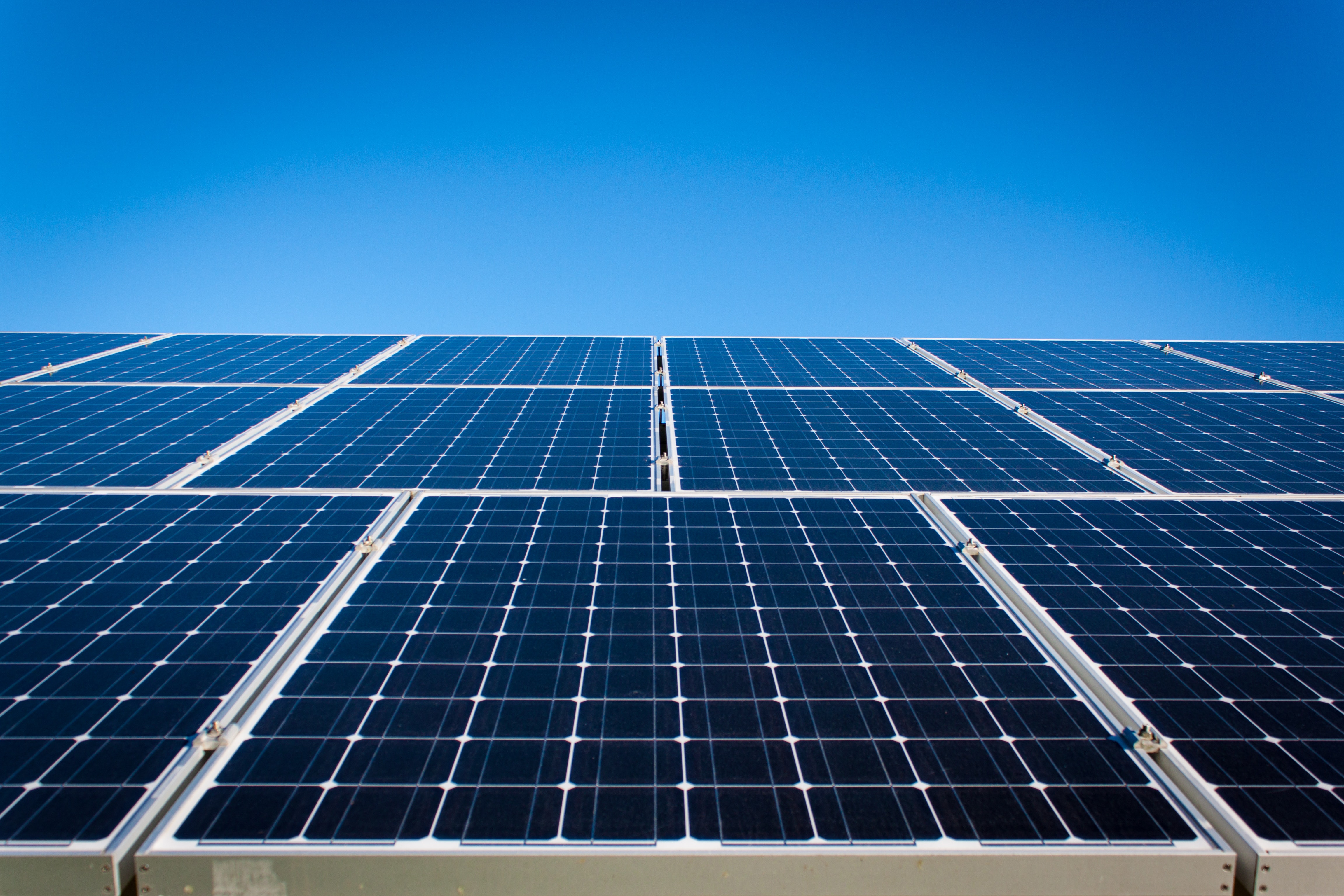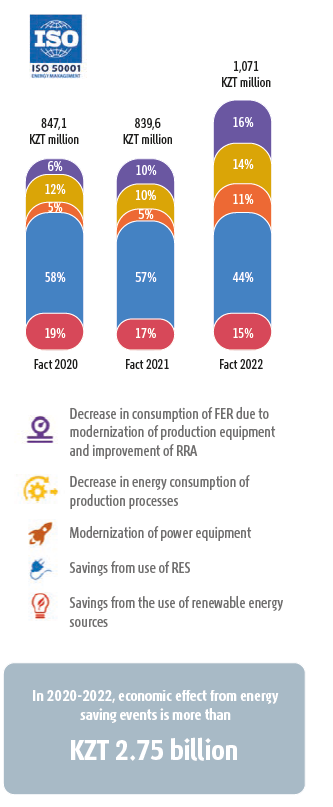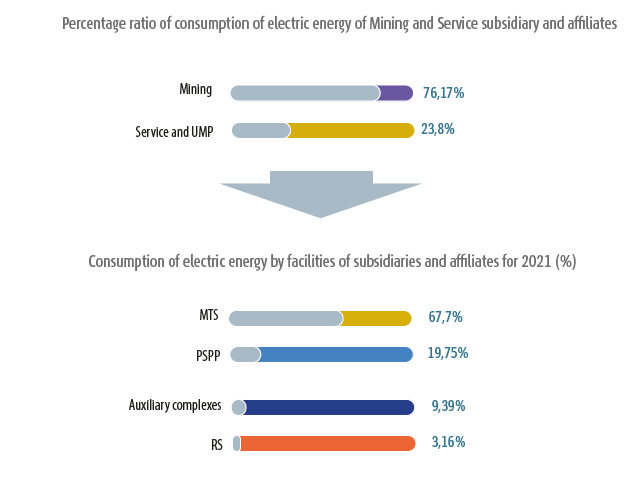Industry News06.06.2023
Strategy of decarbonization and achievement of carbon neutrality of NAC "Kazatomprom" JSC until 2060

Recent global events have led to increased attention to energy security and diversification of energy generation sources, which has allowed nuclear power to come to the fore as an indispensable basic alternative to fossil fuels. Against the background of a global discussion of the challenges associated with climate change and the benefits of ESG policy development, we are witnessing a growing interest of the world community in the nuclear industry.
Today, decarbonization is not only a means to solve environmental and climatic problems, but also a way to ensure the differentiation of its products and its competitiveness on a global scale.
According to International Energy Agency (IEA) report, nuclear power accounted for about 10% of global electricity production in 2020. Nuclear power is still the second largest source of electricity with low greenhouse gas emissions after hydropower.
Without nuclear power plants, total emissions from electricity production would be almost 20% higher.
By 2040, 85% of the world's electricity will be produced from clean sources, compared to 36% today.
In this regard, Kazatomprom plans to play a significant role in implementation of energy transition efforts, while remaining committed to its strategy of creating long-term value, while observing high production standards and environmental safety.
Taking into account the trends and commitments of the country described above, the Company understands that it can make a significant contribution to achieving the goals and objectives of the country.
In this regard, in October 2022, Kazatomprom developed and approved a Strategy for decarbonization and achieving carbon neutrality, defining the Company's climate ambitions, systematizing the main approaches and understanding the current level of greenhouse gas emissions, as well as defining measures to reduce the carbon footprint.
According to the approved strategy, the Company has decided to reduce greenhouse gas emissions by 2030 to 10% compared to 2021 (Coverage 1.2), and by 2060 it is planned to achieve full carbon neutrality.
For information, the total carbon footprint of direct and indirect CO2 emissions of Samruk-Kazyna Fund Group is estimated at the level of 57.8 million tons by the end of 2021.
Greenhouse gas emissions from direct and indirect emissions for 2021 amount to 949.4 thousand tons, where the share of direct emissions is 106.9 thousand tons or 11% of all greenhouse emissions, and the share of indirect emissions is 842.5 thousand tons or 89%, respectively.
Indirect emissions from Coverage 2 are predominant, and this is directly related to the purchase of energy resources, mainly by coal-fired power plants.
The structure of greenhouse gas emissions from Coverage 1 consists of boiler plants, mobile compressor stations with a diesel engine and motor vehicles.
The proportion of direct greenhouse gas emissions in the structure of the Company's line of business: 59% - mining enterprises, 34% - auxiliary activities, 6% - nuclear fuel cycle.
Thus, the share of direct and indirect greenhouse gas emissions of Kazatomprom in the structure of all enterprises of the Fund by the end of 2021 is only 1.63%.
Despite these indicators, in order to achieve full carbon neutrality, Kazatomprom implements 3 types of decarbonization development scenarios until 2060 - pessimistic, realistic and optimistic, where realistic goals until 2030 -10%, and optimistic -15%.

The main tool for reducing direct greenhouse gas emissions is implementation of a project to optimize fuel consumption in motor vehicles, boiler houses and compressor units, as well as a partial transition to gas consumption.
Reduction of indirect emissions will be achieved by implementing a comprehensive energy efficiency and energy saving program, increasing electricity consumption from renewable and alternative sources, implementing digital solutions aimed at optimizing electricity consumption, and purchasing carbon offset units.
Implementation of the approved decarbonization indicators directly depends on implementation of the energy saving and energy efficiency program, which in turn solves not only environmental issues, but also brings economic benefits to the company.
Thus, in 2020-2021, economic benefits amounted to 840 million tenge or electricity savings of 38-40 million kWh. At the same time, the indicators for 2022 amount to 1.071 billion tenge.
The main energy saving and energy efficiency measures are: reducing the energy intensity of technological processes, reducing the consumption of fuel and energy resources, saving from the use of renewable energy and much more.
The total economic benefits for 2020-2022 amount to 2.75 billion tenge or 130 million kWh, diesel fuel consumption has also been reduced by 1100 tons, which had a positive effect on reducing direct greenhouse emissions.
The structure of electricity consumption by our enterprises shows that 76.17% is electricity consumption by our mining enterprises, and 23.83% is accounted for by UMP enterprises and service enterprises.
It follows from this that, according to the Pareto principle, we need to focus on the mining sector.
The structure of electricity consumption in the mining sector: 67.7% is accounted for by wellfield, where the main source of consumption is operation of submersible pumps and centrifugal pumping stations, 19.75% - the workshop for processing pregnant solutions (operation of large pumping stations and stationary compressor equipment), and 12.55% - auxiliary complexes and Refining shop.

In 2022, the Samruk-Kazyna Fund set Kazatomprom the task of keeping emissions at the level of 2021, reducing emissions by 1% by 2023, by 8% by 2027 and achieving a 15% reduction in emissions by 2030 under an optimistic scenario.
To date, according to preliminary calculations, the indicators of greenhouse gas emissions by the end of 2022 have not been exceeded and have remained at the same level compared to 2021.
Last year, the production department carried out a lot of work on in-depth analysis of greenhouse gas emissions and modeling of possible scenarios for development of decarbonization, including mechanisms and tools for implementing the Decarbonization Strategy.
It can already be stated that direct and indirect greenhouse gas emissions will be significantly less than in previous years, due to a reduction in electricity consumption from coal-fired power plants and an increase in consumption from renewable energy sources, as well as use of a number of energy-efficient and energy-saving measures.
Decarbonization and sustainable development to take center stage at the 11th Annual Downstream Central Asia & Caspian Conference
Renewable electricity share in Turkey nears 50%
Sinn Power plans groundbreaking floating photovoltaic system in Bavaria
Swiss researchers boost efficiency of vertical axis wind turbines
Rapid expansion of batteries will be crucial to meet climate and energy security goals set at COP28
Georgia acquires first floating solar power plant
Wind turbine blades get a sustainable upgrade
China restricts offshore solar PV projects to specific sea areas
Biden announces $7 billion for solar energy in low-income communities
Production of a solar energy storage battery has started in Vilnius
Ainur Sospanova: Clear rules are needed for functioning of bilateral contracts market
Process to submit applications for RES auctions to construct HPPs and WPPs has commenced in Kazakhstan
JinkoSolar recognized as a Tier 1 Energy Storage Provider by BNEF
Japanese satellites will transmit solar power to Earth
Australia has planned a 1 GW hydroelectric power plant at former coal pit
Apple ramps up investment in clean energy and water around the world
Two countries in Europe are powered by 100% renewable energy as wind capacity soars
IRENA’s report: Transition to renewables calls for new approach to energy security
New wind power plant to be built in Baku
Cost of bringing wind power plants into operation drops by more than one-third












